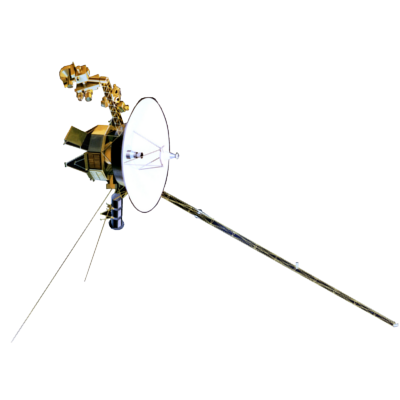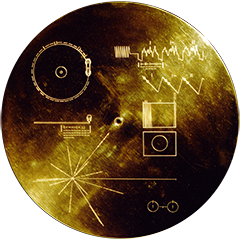Voyager LECP Data Analysis Handbook
Calibrations and Channel Definitions
LECP-010-74
April 6, 1974
To: LECP Group
From: T. P. Armstrong
Subject: LEPT Logic and PHA Design
I have completed a thorough study of the logic and passbands and have arrived at the following "final" list of channels and logic. I also suggest at this time "renormalization" of the detector and discriminator names as follows: (Only final naming is given. TPA, 6/26/2000)
|
2 Micron |
EO |
0.1 Mev |
| EOA |
0.3 Mev |
|
| EOB |
0.65 Mev |
|
| EOC |
1.45 Mev |
|
| EOD |
3.0 Mev |
|
|
5 Micron |
E1 |
0.1 Mev |
| EIA |
1.8 Mev |
|
| EIB |
4.5 Mev |
|
| EIC |
10.0 Mev |
|
|
150 Micron |
E2 |
0.1 Mev |
| E2A |
1.2 Mev |
|
| E2B |
5.5 Mev |
|
| E2C |
80.0 Mev |
|
|
2500 Micron |
E3 |
0.3 Mev |
| E3A |
2.05 Mev |
|
| E3B |
22.0 Mev |
|
|
2500 Micron |
E4 |
0.3 Mev |
| E4A |
2.05 Mev |
|
| E4B |
110.0 Mev |
|
| E4C |
950.0 Mev |
|
|
100 Micron |
E5 |
0.05 Mev |
| E5A |
0.1 Mev |
|
| E5B |
0.5 Mev |
|
| E5C |
19.0 Mev |
|
| E5D |
165.0 Mev |
|
|
E1E20.6 |
L12A |
0.3 (Mev)1.6 |
| L12B |
2.0 (Mev)1.6 |
|
| L12C |
22.8 (Mev)1.6 |
|
|
E2E30.6 |
L23A |
60.0 (Mev)1.6 |
| L23B |
512.0 (Mev)1.6 |
|
| L23C |
1990.0 (Mev)1.6 |
|
|
E5E40.6 |
L54A |
4.0 (Mev)1.6 |
| L54B |
62.0 (Mev)1.6 |
|
| L54C |
320.0 (Mev)1.6 |
|
| L54D |
1990.0 (Mev)1.6 |
The set of channels I propose is as follows:
NOTE: underlined logic denotes anti-coincidence.
|
CHANNEL NUMBER |
PRIORITY |
||||||||
|
1. |
III |
E1 |
E1A |
E2 |
E2A |
E3 |
L12A |
||
|
2. |
III |
E1 |
E1A |
E2A |
E2B |
E3 |
L12A |
||
|
3. |
III |
E1 |
E1A |
E2 |
E2B |
E3 |
L12A |
L12B |
|
|
4. |
III |
E1 |
E1A |
E2B |
E3 |
L12A |
L12B |
||
|
5. |
II |
E1 |
E1B |
E2 |
E3 |
L12B |
L12C |
||
|
6. |
II |
E1B |
E1C |
E2 |
E2C |
E3 |
|||
|
7. |
II |
E1 |
E1C |
E2B |
L12C |
E3 |
|||
|
8. |
I |
E1C |
E2 |
E2C |
E3 |
||||
|
9. |
I |
E1B |
E2C |
E3 |
|||||
|
10. |
III |
E2A |
E2B |
E3 |
E3B |
E4 |
|||
|
11. |
III |
E2 |
E2A |
E3A |
E3B |
E4 |
|||
|
12. |
III |
E2B |
E2C |
E3 |
E4 |
L23A |
|||
|
13. |
III |
E2 |
E2B |
E3B |
E4 |
L23A |
|||
|
14. |
II |
E2A |
E2C |
E3 |
L23A |
L23B |
E4 |
||
|
15. |
II |
E2B |
E3A |
L23B |
L23C |
E4 |
|||
|
43. |
I |
E2A |
E3A |
L23C |
E4 |
||||
|
16. |
III |
E5B |
E4 |
L54A |
E3 |
||||
|
17. |
III |
E5B |
E5C |
E4 |
L54A |
L54C |
E3 |
||
|
18. |
II |
E5B |
E5C |
E4A |
L54B |
L54C |
E3 |
||
|
19. |
II |
E5C |
E5D |
E4 |
E4B |
L54C |
L54D |
E3 |
|
|
20. |
II |
E5B |
E5D |
E4B |
E4C |
L54C |
L54D |
E3 |
|
|
21. |
I |
E5B |
E4A |
E4C |
L54D |
E3 |
|||
|
22. |
I |
E5B |
E4C |
L54D |
E3 |
||||
|
23. |
III |
E5A |
E5B |
E4A |
E4B |
E3A |
E2 |
||
|
24. |
III |
E5B |
E5C |
E4A |
E4B |
E3A |
E2 |
||
|
25. |
II |
E5B |
E5C |
E4B |
E4C |
E3B |
E2 |
||
|
26. |
I |
E5C |
E4B |
E4B |
E2 |
||||
|
27. |
III |
E5A |
E5B |
E4A |
E4B |
E3A |
E3B |
E2 |
E2A |
|
28. |
III |
E5B |
E5C |
E4A |
E4B |
E3B |
E2 |
E2B |
|
|
29. |
II |
E5B |
E5C |
E4B |
E4C |
E3B |
E2 |
||
|
30. |
I |
E5C |
E4C |
E3B |
E2 |
||||
|
31. |
III |
E4 |
E4A |
E3 |
E3A |
||||
|
32. |
III |
EO |
EOA |
E2 |
E2A |
E3 | |||
|
33. |
III |
EOA |
EOB |
E2 |
E2A |
E3 | |||
|
34. |
II |
EOB |
EOC |
E2 |
E2A |
E3 | |||
|
35. |
II |
EOC |
EOD |
E2 |
E2A |
E3 | |||
|
36. |
I |
EOD |
E2 |
E2A |
E3 |
||||
|
37. |
EOD |
E2 |
|||||||
|
38. |
EOB |
EOD |
E2 |
||||||
|
39. |
EOA |
EOB |
E2 |
||||||
|
40. |
E5 |
E5A |
(Weak Magnetosphere) | ||||||
|
41. |
AL |
AR |
(Left & Right Shield Coinc.) | ||||||
|
42. |
AL Left Shield | Subcommutate | |||||||
| AR Right Shield | |||||||||
| E1 | |||||||||
| E2 | |||||||||
| E3 | |||||||||
| E4 | |||||||||
| E5 | |||||||||
|
43. |
(See following #15) | ||||||||
PRIORITY CATEGORIES
-
Highest, Heavy Particles
|
(1 2 3) |
Ch.8,9 |
|
(0 2 3) |
Ch.36 |
|
(2 3 4) |
Ch.43 |
|
(5 4 3) |
Ch.21,22 |
|
(5 4 3 2 ) |
Ch.26 |
|
(5 4 3 2) |
Ch.30 |
II. Intermediate
|
(1 2 3) |
Ch.5,6,7 |
|
(0 2 3) |
Ch.34,35 |
|
(2 3 4) |
Ch.14,15 |
|
(5 4 3) |
Ch.18,19,20 |
|
(5 4 3 2) |
Ch.25 |
|
(5 4 3 2) |
Ch.29 |
III. Lowest
|
(1 2 3) |
Ch.1,2,3,4 |
|
(0 2 3) |
Ch.32,33 |
|
(2 3 4) |
Ch.10,11,12,13 |
|
(5 4 3) |
Ch.16,17 |
|
(5 4 3 2) |
Ch.23,24 |
|
(5 4 3 2) |
Ch.27,28 |
|
(4 3) |
Ch.31 |
FIGURES:
Figure 1 Channels in the 5-150 micron combination for the coincidence condition (1 2 3).
Figure 2 Channels in the 2-150 micron combination for the coincidence condition (0 2 3).
Figure 3 Channels in the 150-2500 micron combination for the coincidence condition (2 3 4).
Figure 4 Channels in the 100-2500 micron combination for the coincidence condition (5 4 3).
Figure 5 Channels in the 100-2500 micron combination for the coincidence condition (5 4 3 2) and 5 4 3 2.
Figure 6 Channels in the 2500-2500 micron combination for the coincidence condition (5 4 3 2) and 5 4 3 2.
Pulse Height Analysis Sampling Scheme
- Each PHA data set should
include the following items:
- Rate Channel Indicator (6 bits)
- Detector Identifier E0, Ela, Elb, Elc (1 bit)
- First Detector PHA (8 bits) (EO, Ela, Elb, E5) *
- Second Detector PHA (8 bits) (E2)
- Third Detector PHA (8 bits) (E3)
- Fourth Detector PHA (8 bits) (E4)
*EO, Ela, Elb are the thin detectors which share a log amp – the choice is between E5 and the shared thin detector output.
- Rotating Priority Scheme
After a I event, the priority is II/III/I for the next event.
After a II event, the priority is III/I/II for the next event.
After a III event, the priority is I/II/III for the next event.
Failure Modes
In the detailed logic design Ed Tums will look for the opportunities to override the PHA priority scheme and enable, by command, PHA if any pair of detectors is triggered.
Return to Calibrations main page.
Return to Voyager
LECP Data Analysis Handbook Table of Contents.
Return to Fundamental
Technologies Home Page.
Updated 8/9/19, Cameron Crane
VOYAGER 1 ELAPSED TIME
*Since official launch
September 5, 1977, 12:56:00:00 UTC
VOYAGER 2 ELAPSED TIME
*Since official launch
August 20, 1977, 14:29:00:00 UTC
QUICK FACTS
Mission Duration: 40+ years have elapsed for both Voyager 1 and Voyager 2 (both are ongoing).
Destination: Their original destinations were Saturn and Jupiter. Their current destination is interstellar space.



